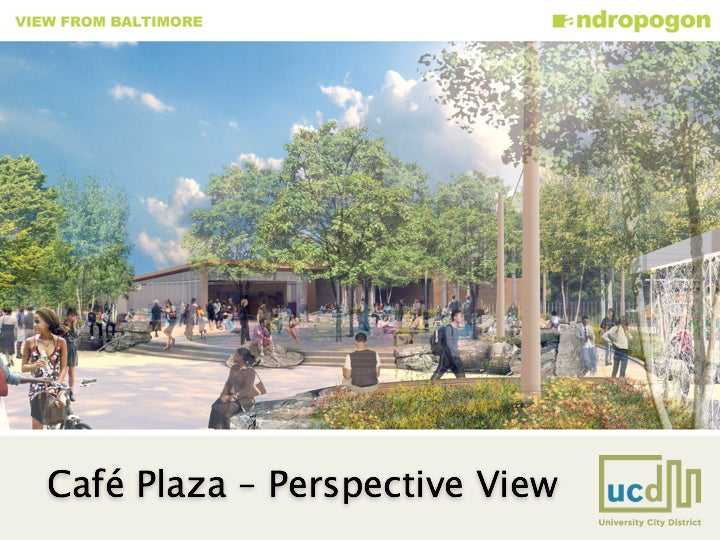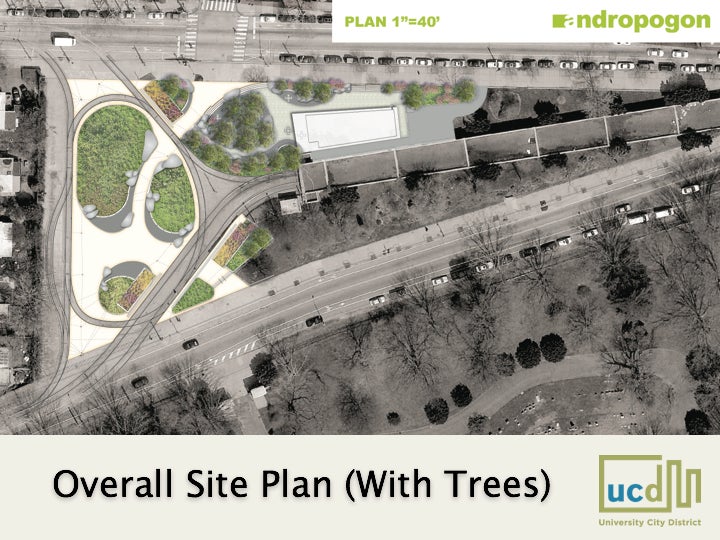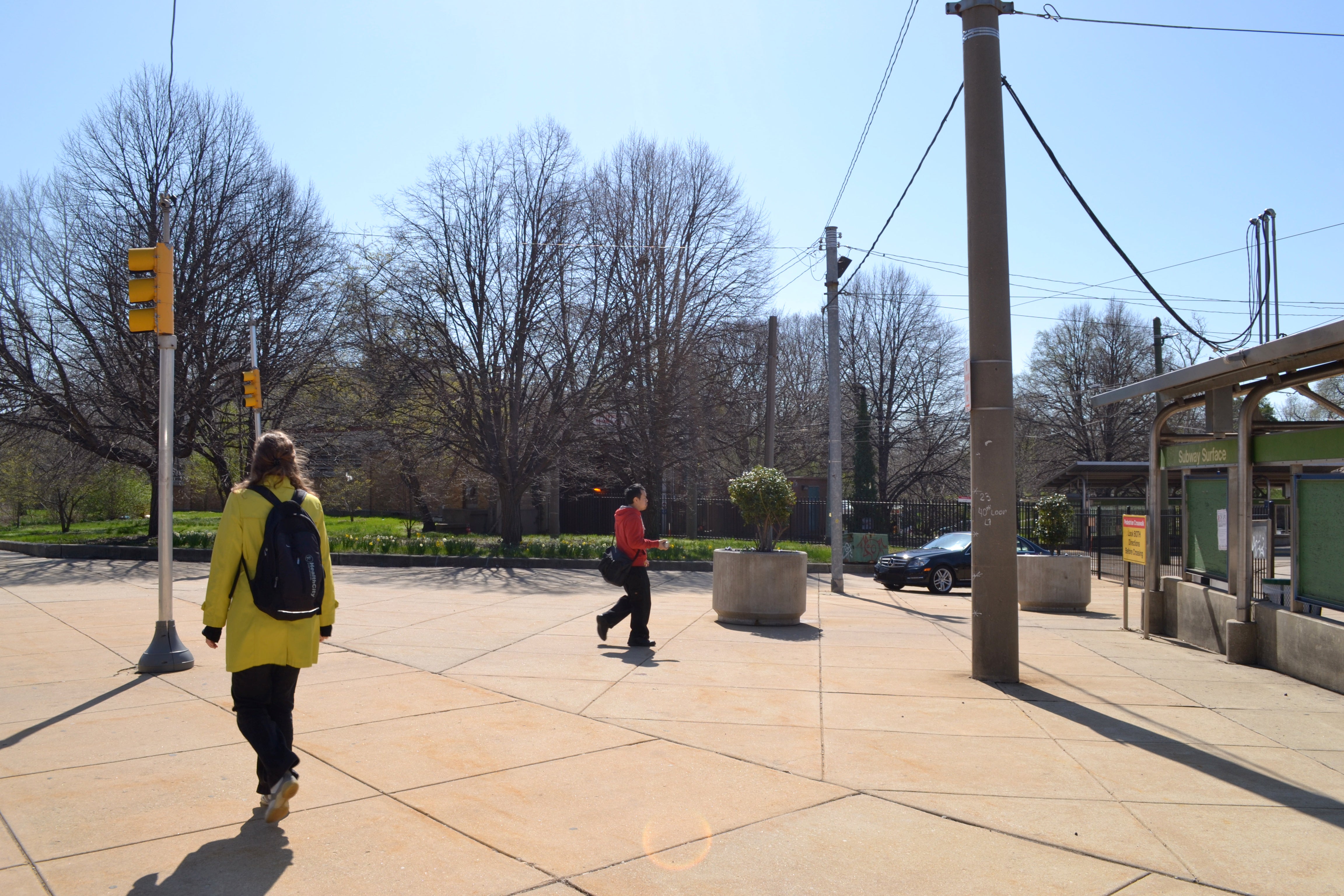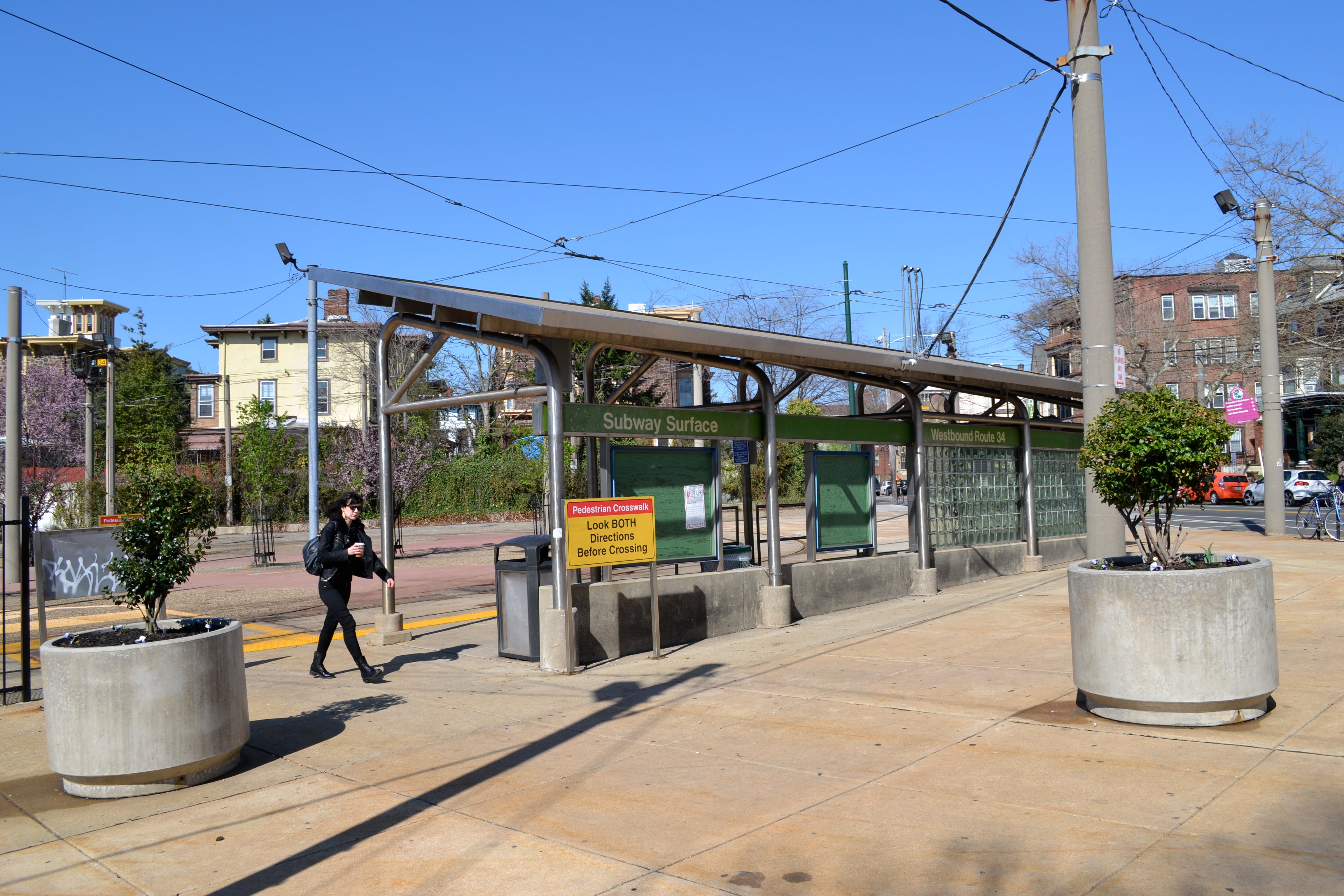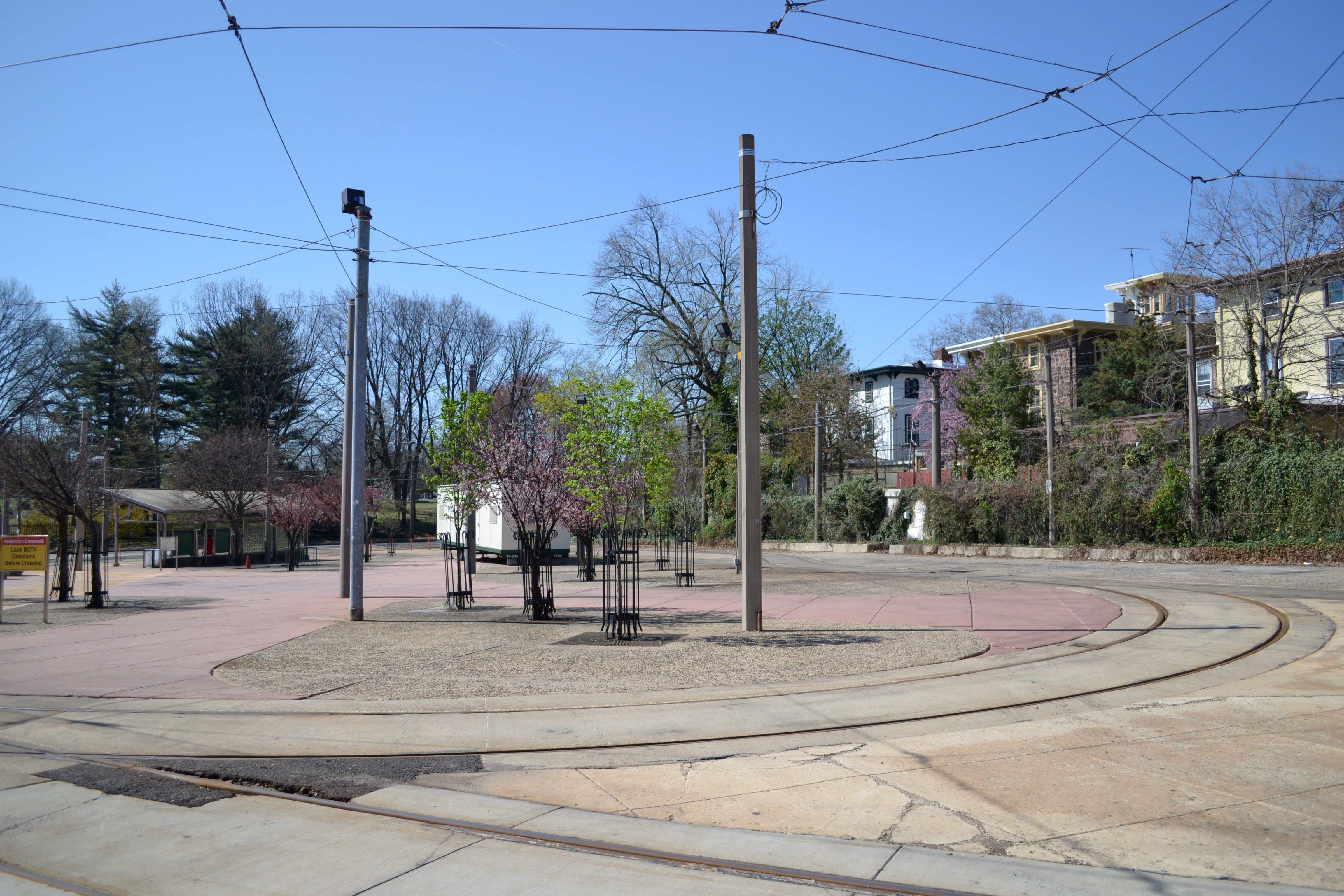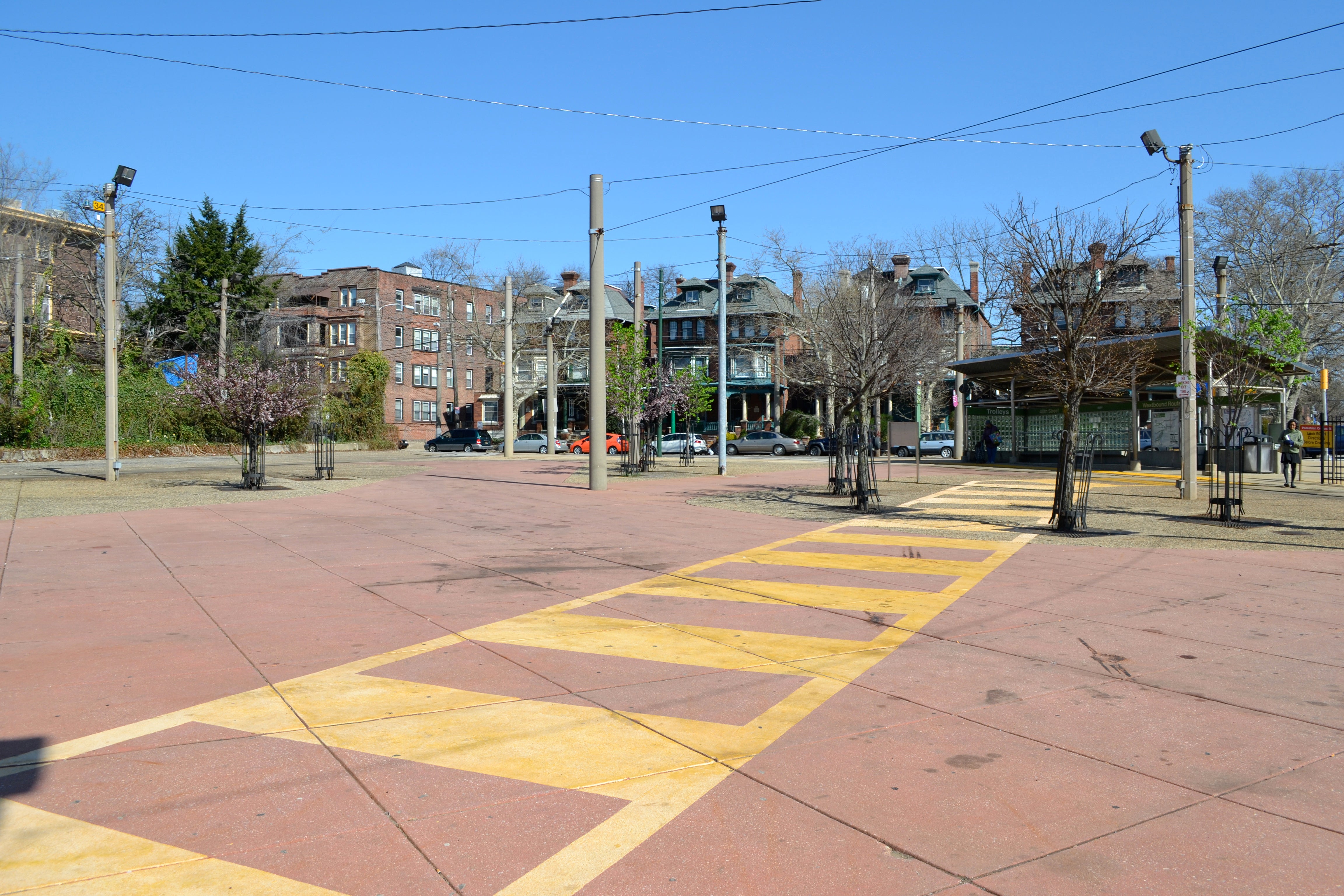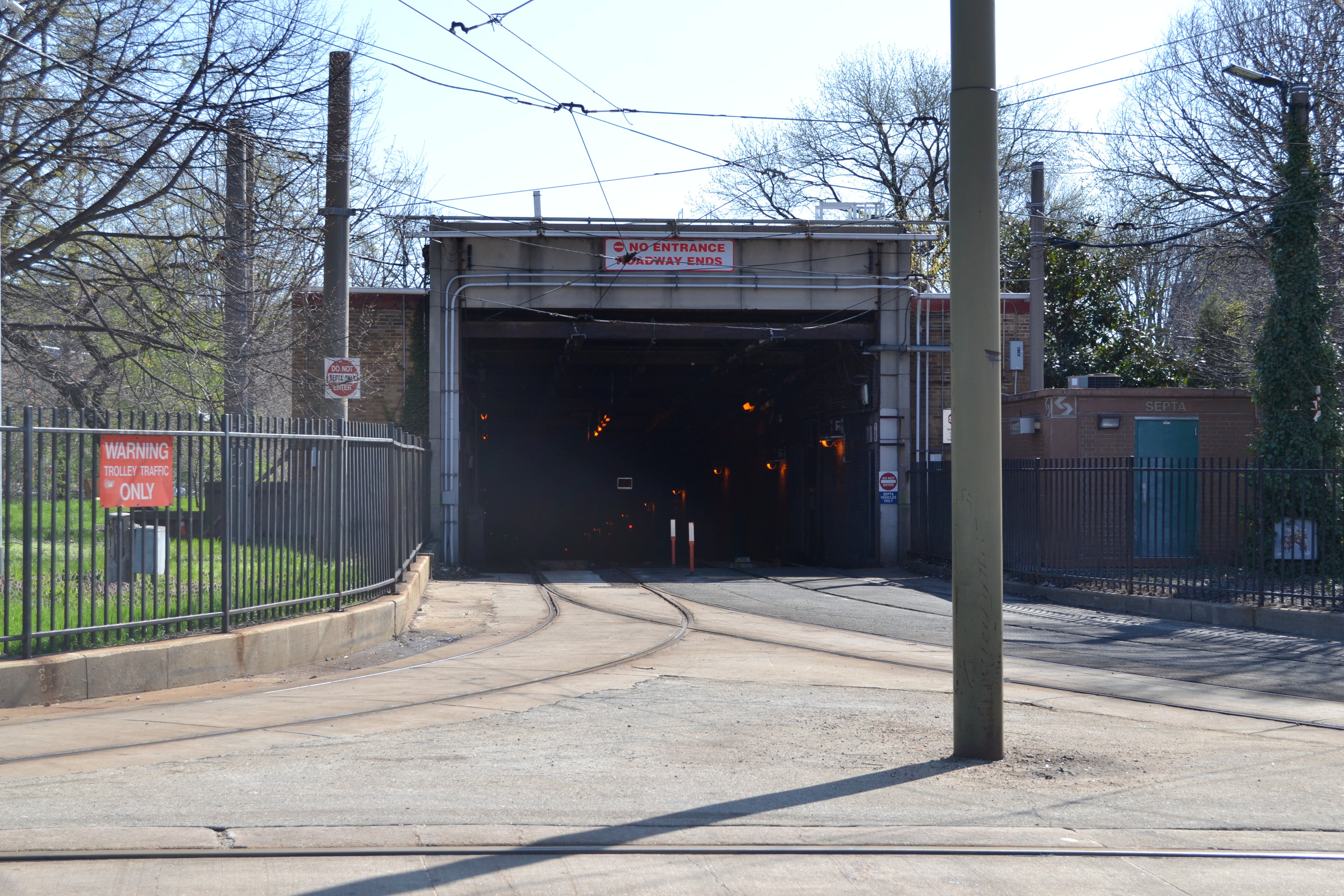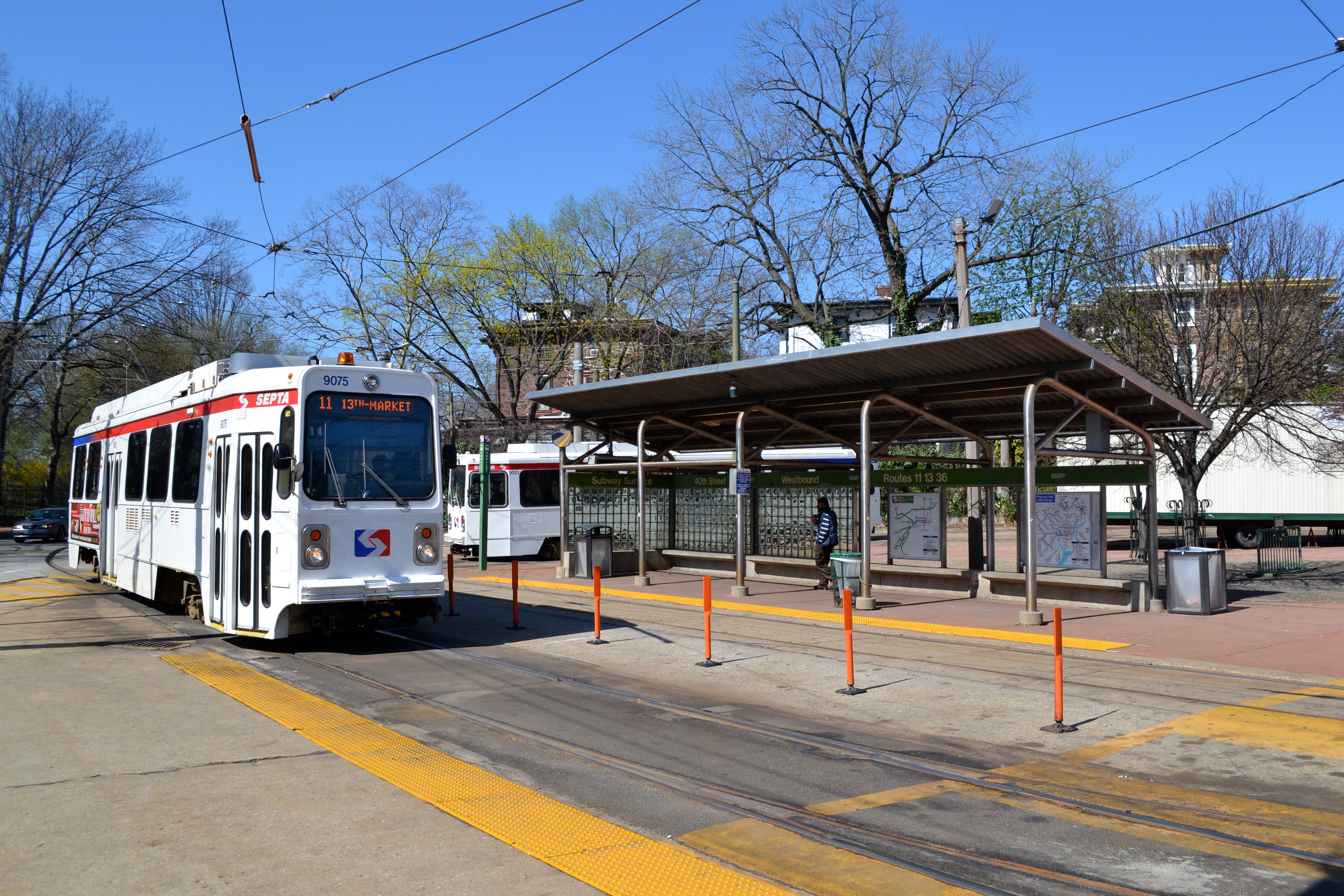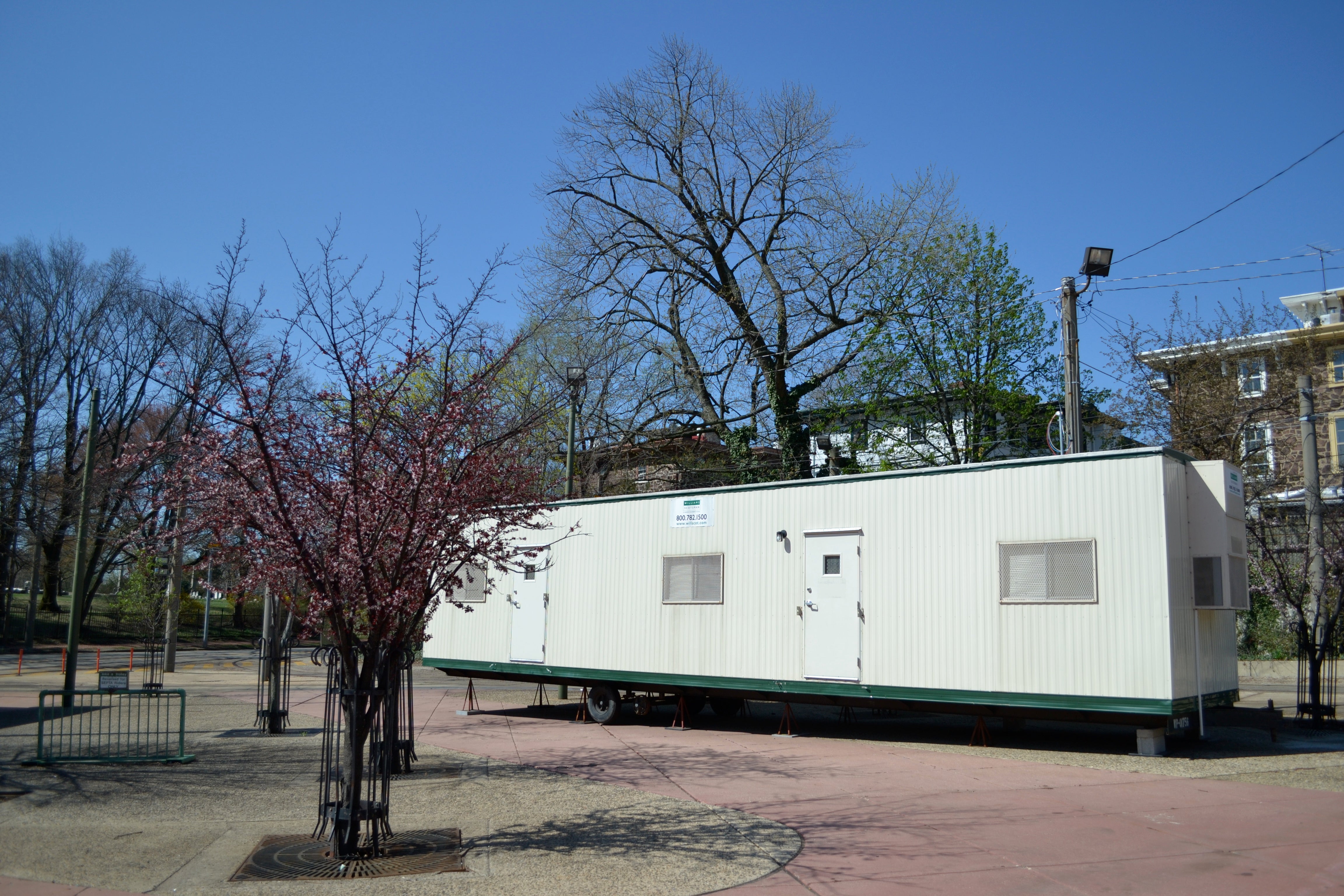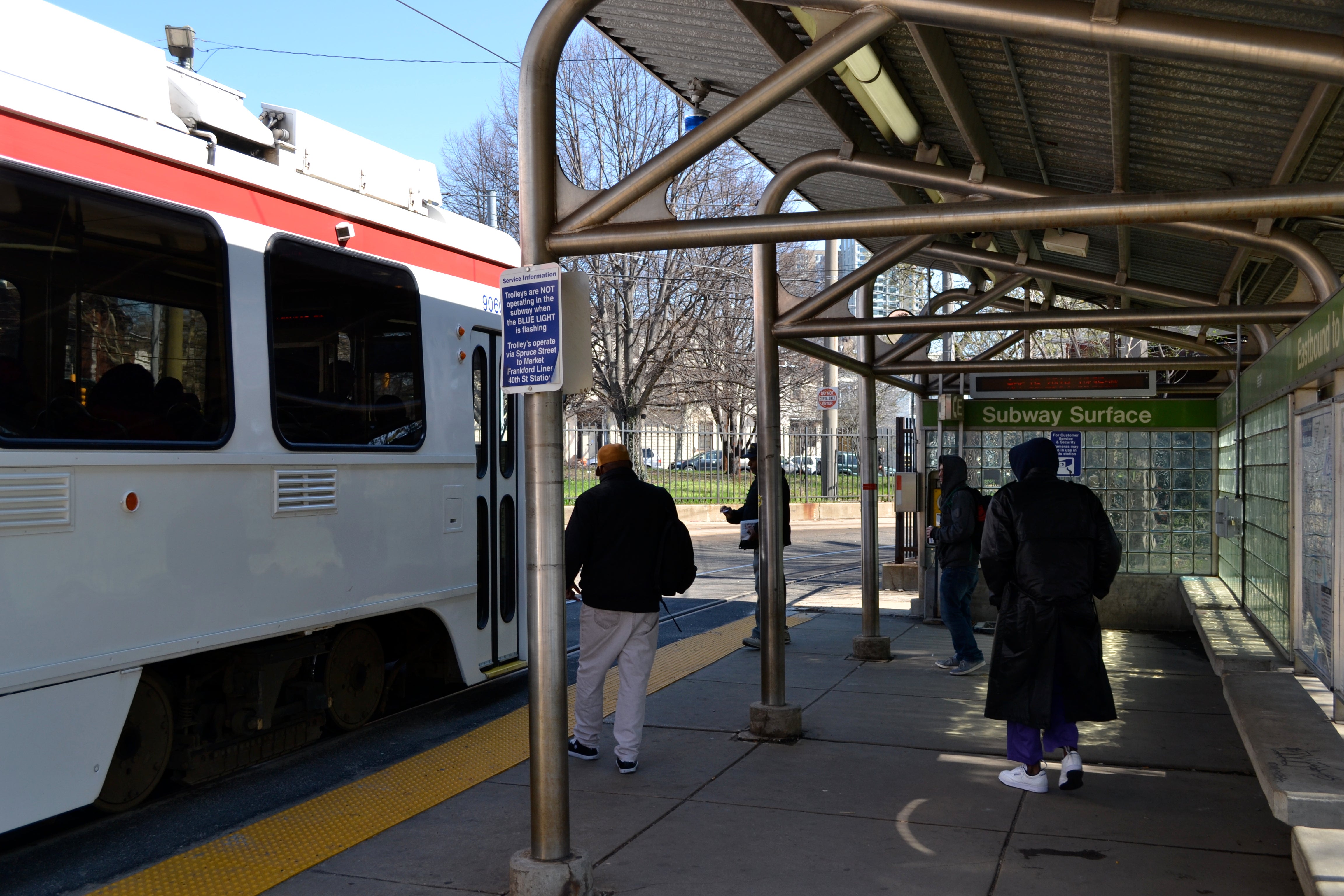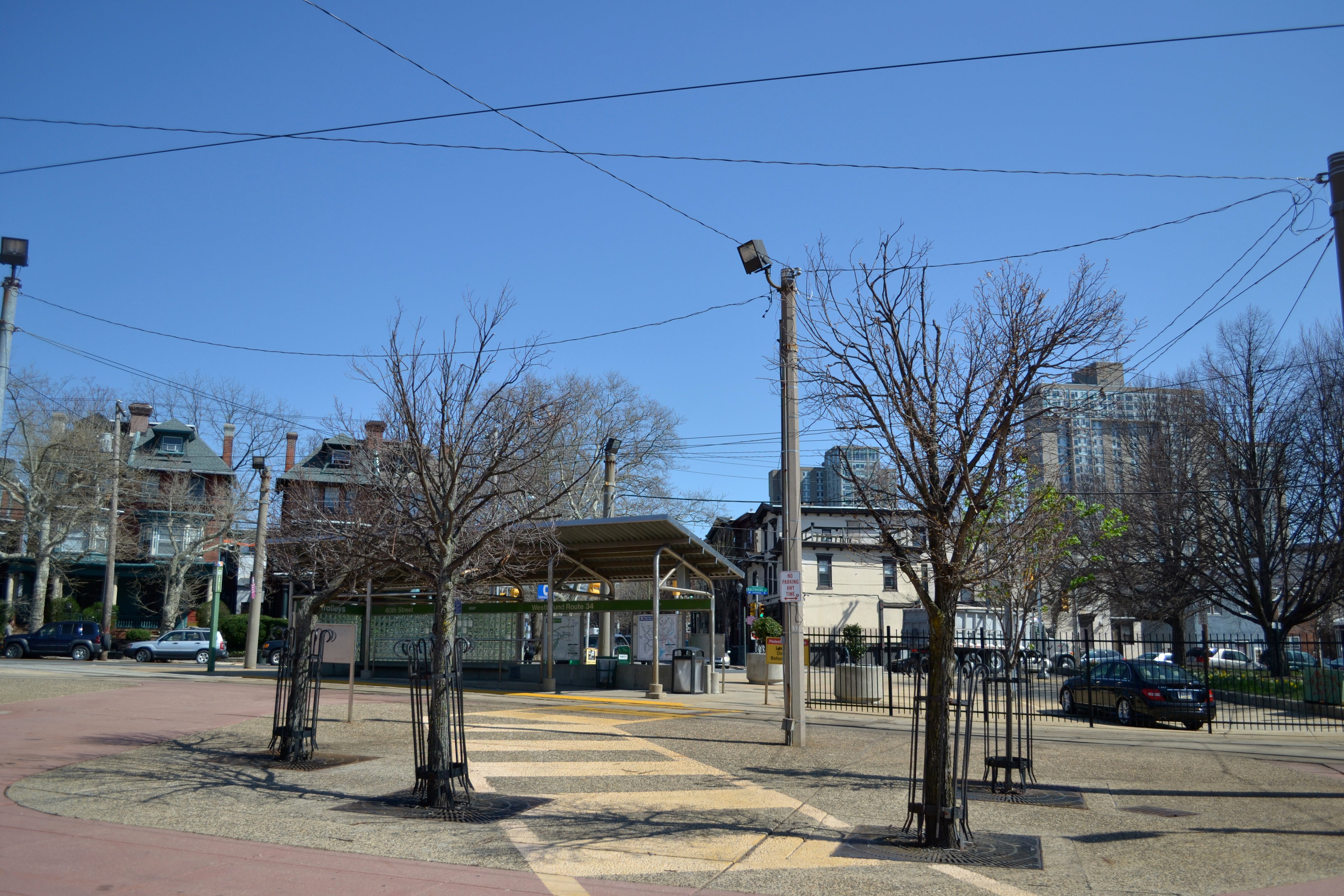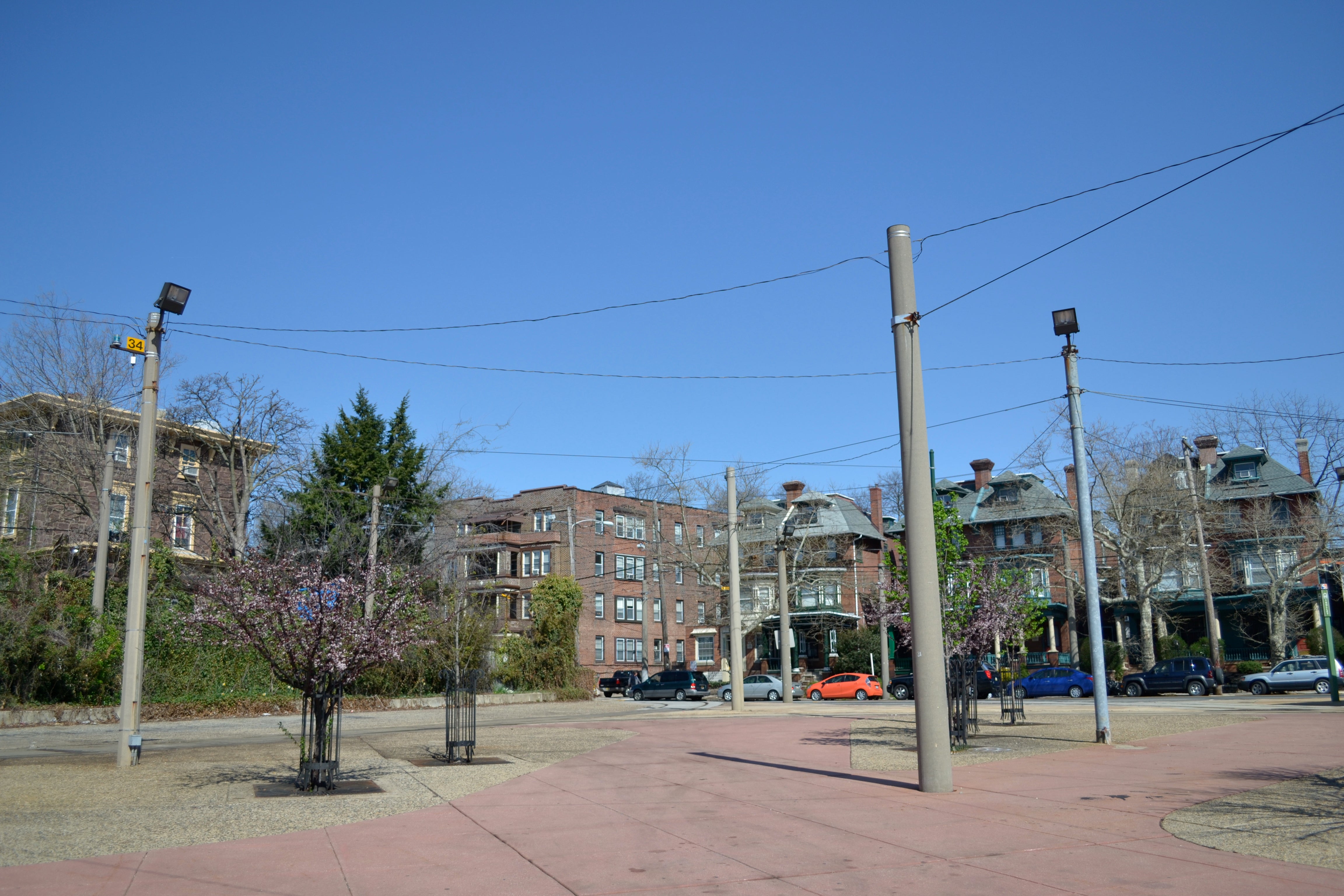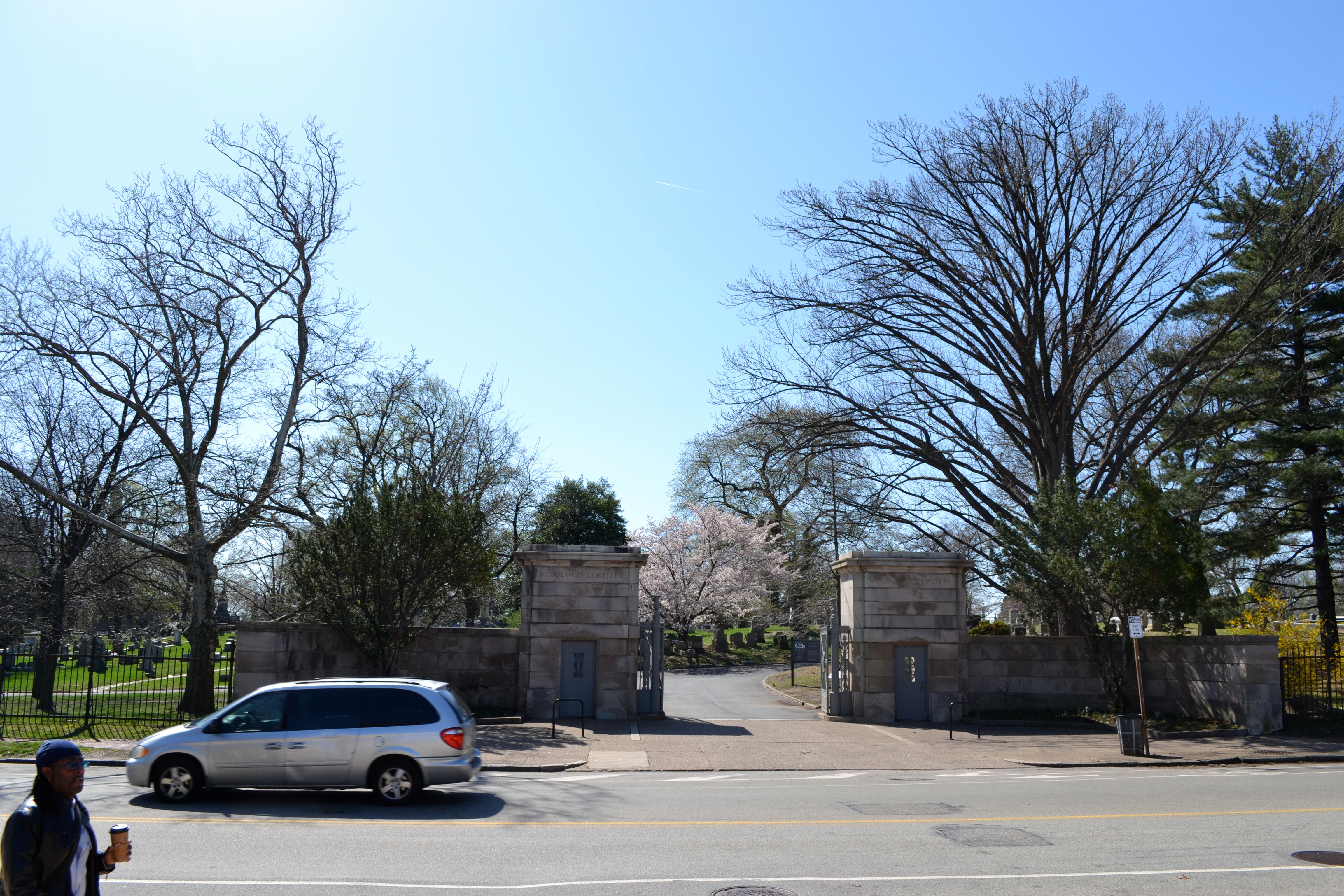40th Street Trolley Portal upgrade update
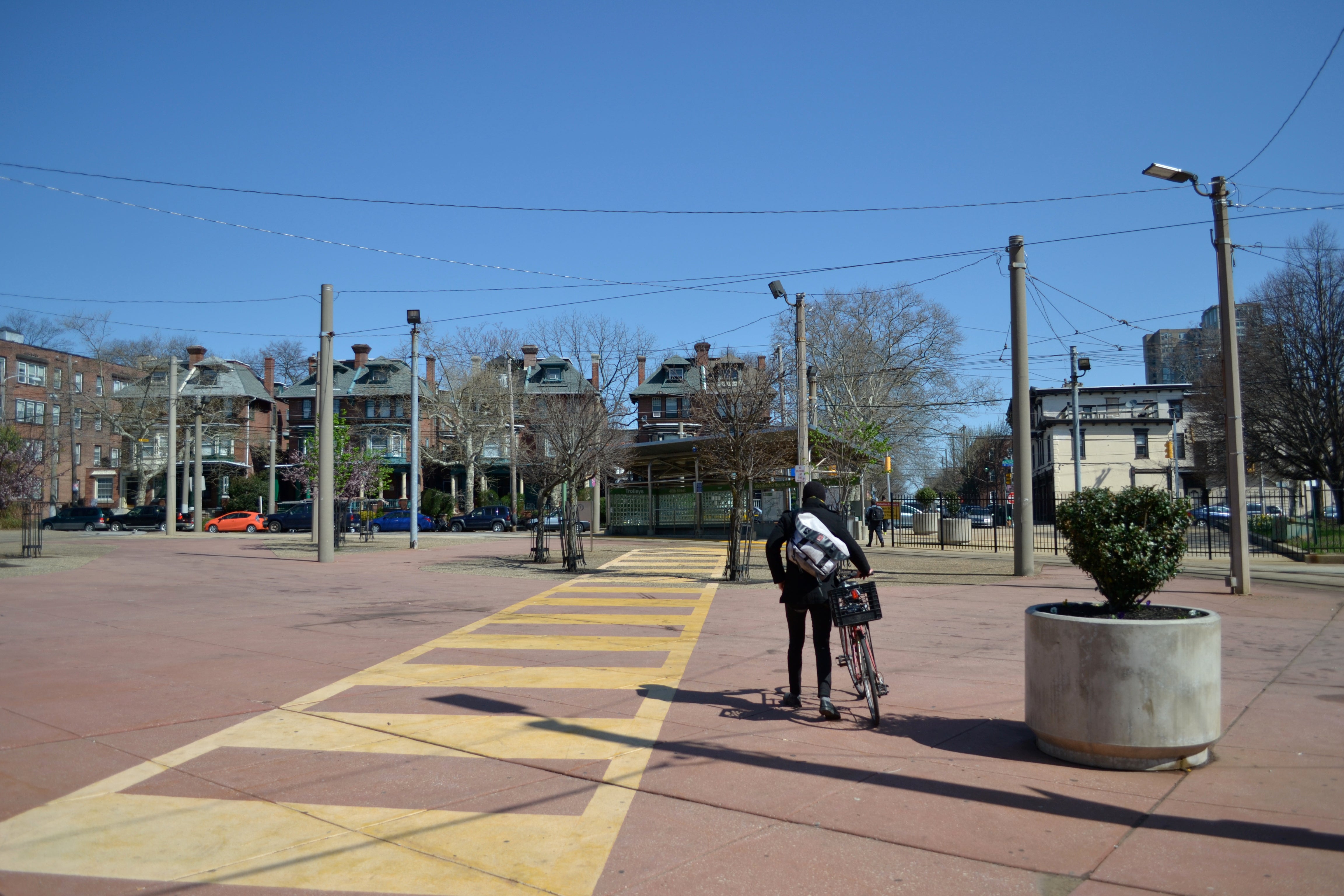
Butterflies and hummingbirds aren’t something most people expect to see in Philadelphia at the spot where four trolley lines intersect before submerging into the gaping mouth of a dark, cavernous tunnel. But those are the types of wildlife that University City District hopes to draw to the 40th Street Trolley Portal as part of its planned renovations.
A year and a half ago, UCD met with a group of Spruce Hill residents to discuss plans for a revamped 40th Street Trolley Portal. At that time, UCD had taken a few key, initial steps. PlanPhilly met with UCD at the portal last week to find out where the project stands now.
“The site, for pretty obvious reasons, has [long] captured the imagination of people,” said Prema Katari Gupta, director of planning and economic development at UCD.
About an acre in size, the 40th Street Trolley portal is wedged between Baltimore Ave and Woodland Ave. It sits at the confluence of three commercial corridors: Baltimore Ave, Woodland Ave and 40th Street, and it serves four busy trolley routes, the 11, 13, 34 and 36.
Despite its prime location and heavy foot and transit traffic, the part of the portal accessible to pedestrians is little more than a swath of concrete with a few stubby trees, dark trolley shelters, a zigzag of overhead wires and a labyrinth of active trolley tracks. That’s what UCD is hoping to change.
About three years ago, the William Penn Foundation gave UCD a planning grant to look at the site. UCD brought in landscape architecture firm Andropogon Associates, Ltd., and the firm came up with a two-phased approach.
In the first phase, UCD will build a pedestrian plaza with room and potential for a cafe near 40th Street. In the second phase, UCD will fill the “apron,” or the open concrete area between the trolley tracks, with landscaping that will guide pedestrians through the space, provide some casual seating and offer stormwater management benefits.
“A lot of the design elements are sort of lessons learned from other public spaces we’ve managed,” Gupta said.
In the pedestrian plaza portion of the project, UCD plans on installing boulders like those at UCD’s Baltimore Crossing and using moveable tables and chairs like those at The Porch at 30th Street Station.
Landscaping and a mix of wildflowers are planned for the space, which happens to be directly across the street from the main entrance to The Woodlands.
“I think they’re really excited to have a new front door,” Gupta said.
UCD hopes to take advantage of the planned vegetation and the proximity of The Woodlands to attract “butterflies and hummingbirds and things that are just kind of interesting in an urban environment,” Gupta said.
Phase one of the project, the plaza area, will likely have a cafe. One that UCD hopes may become a regional attraction. Gupta envisions families bringing children there to watch the trolleys emerge from and submerge into the tunnel.
The second phase of the project involves landscaping the apron area with the raised mounds. The mounds will help to move pedestrians through the hectic intersection of foot and trolley traffic while also offering some visual appeal, seating walls and stormwater management opportunities.
The mounds will have to be relatively low so that they do not block sightlines, and any trees that are planted will have to be species that do not grow too tall since they cannot interfere with the catenary wires that crisscross overhead.
“I think sometimes the best design comes from extreme constraints,” Gupta said.
UCD plans to remove the walls from the current pedestrian shelters and to install green roofs on both the shelters and the roof of the tunnel structure. There is also a “huge lighting element” in the works.
Gupta said the total project cost is estimated to be about $2 million. UCD has raised more than half of that, “but we’ve got some work to do,” she said.
UCD is still working through an agreement with the City, and Gupta said in their respective roles the City’s Mayor’s Office of Transportation and Utilities and SEPTA have been extremely helpful.
Gupta said UCD is “very close” to phase one, and once construction starts that phase should not take long to implement.
“It’s all dependent on our funding, and we’re starting to look at some public funding sources,” she said.
WHYY is your source for fact-based, in-depth journalism and information. As a nonprofit organization, we rely on financial support from readers like you. Please give today.



